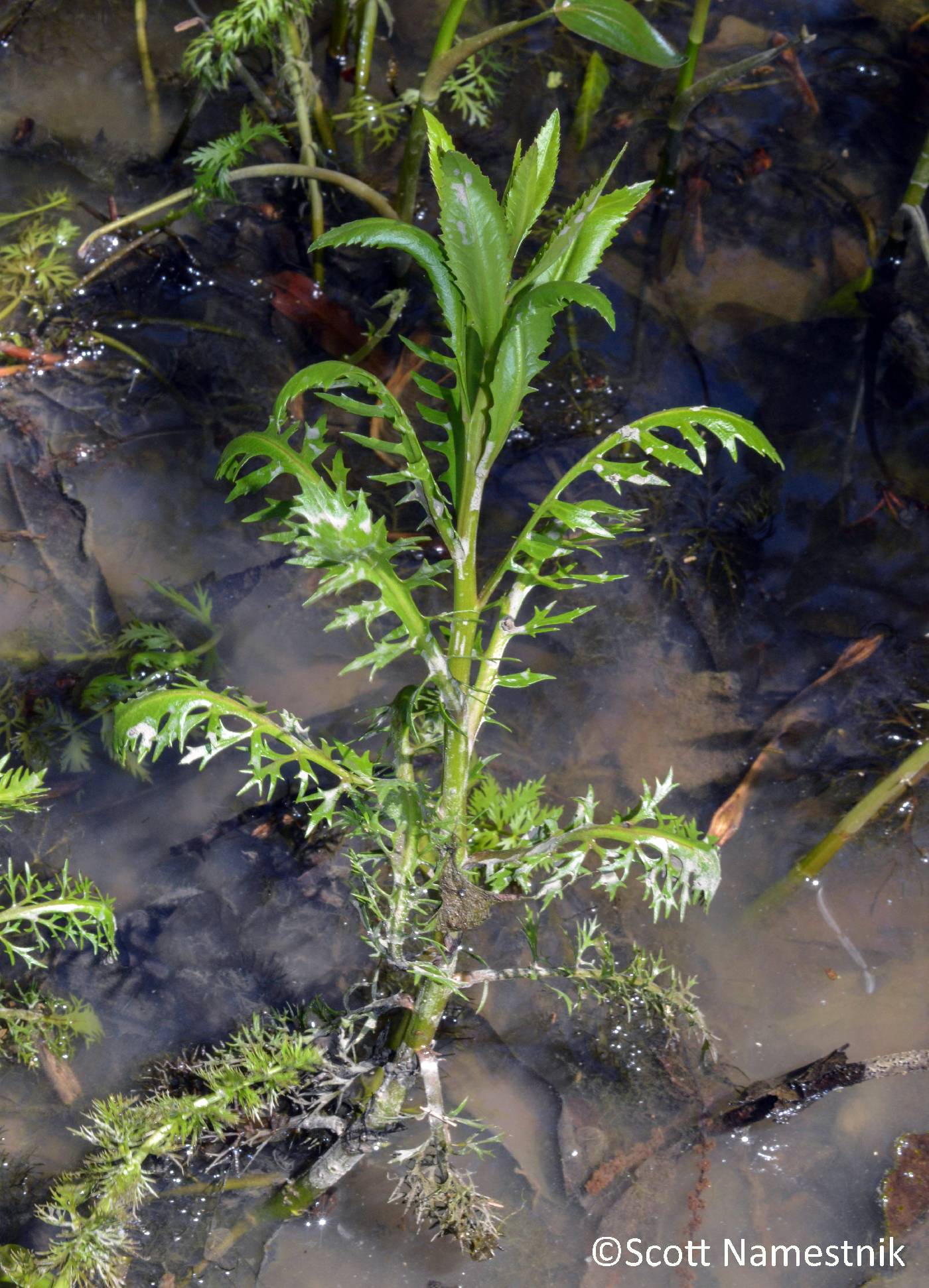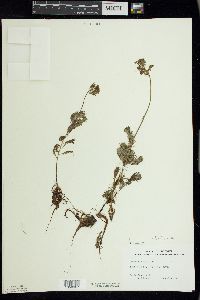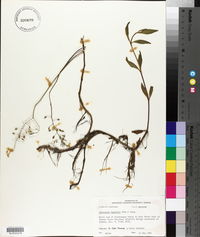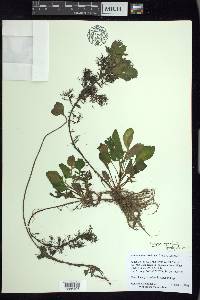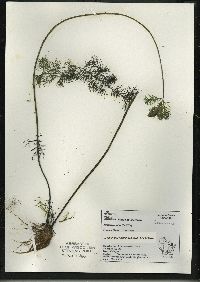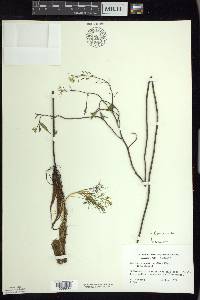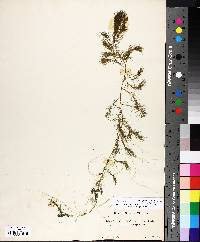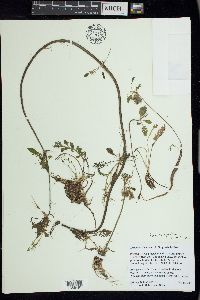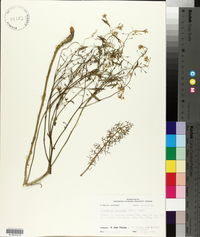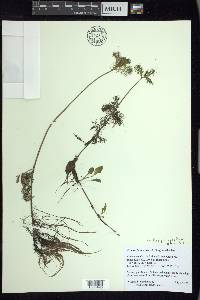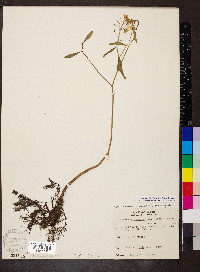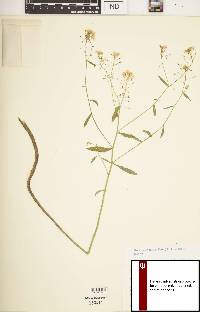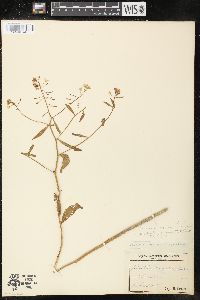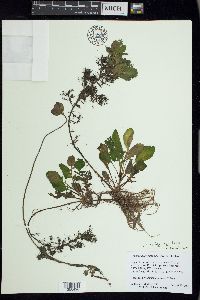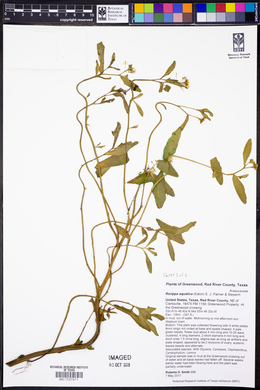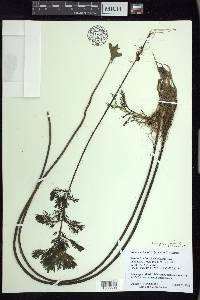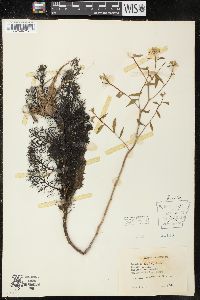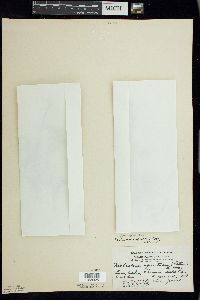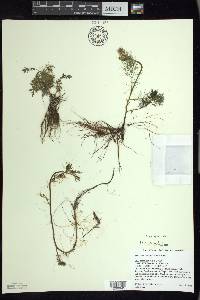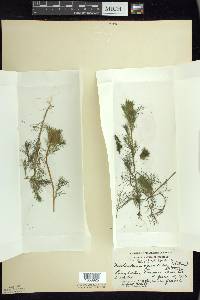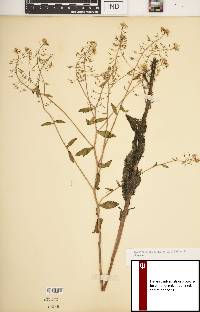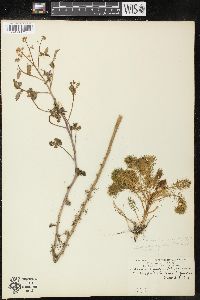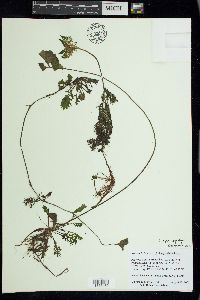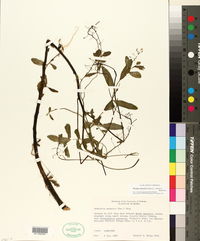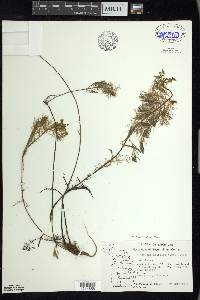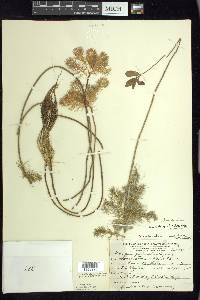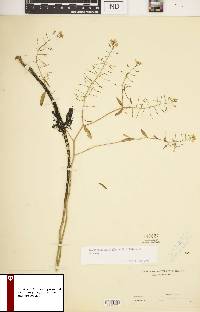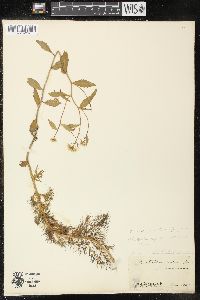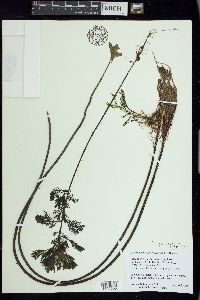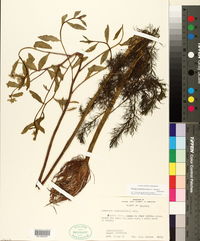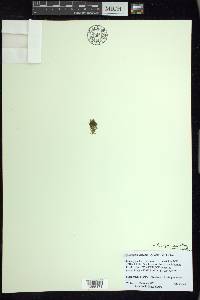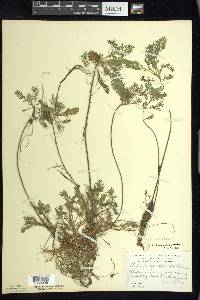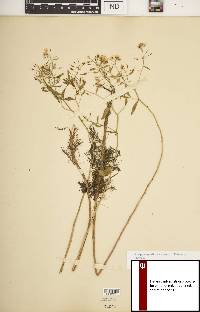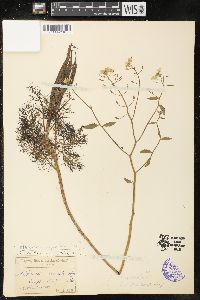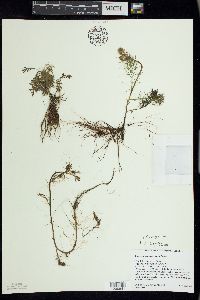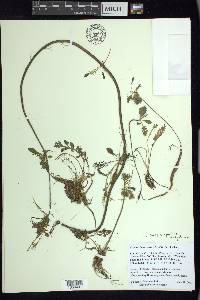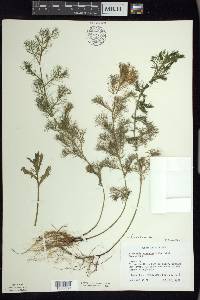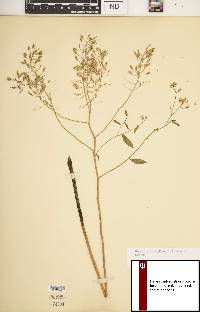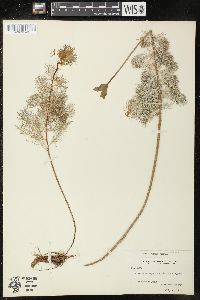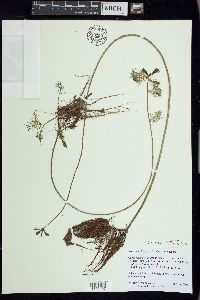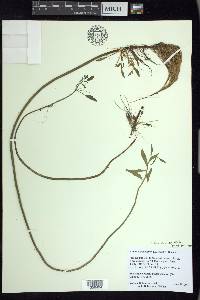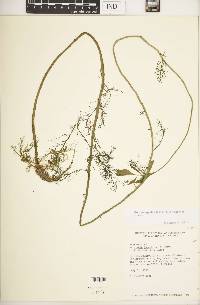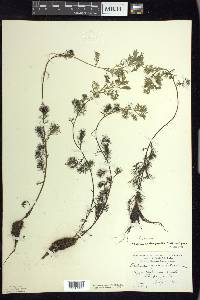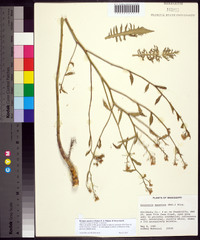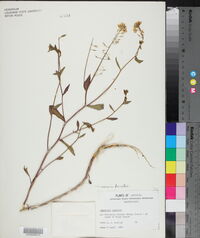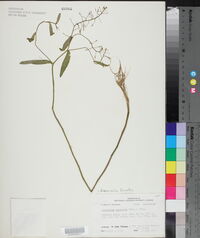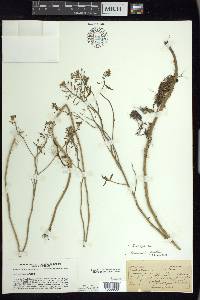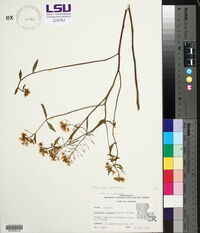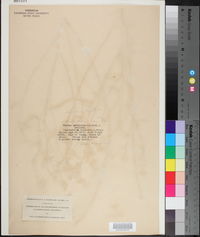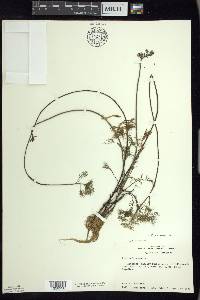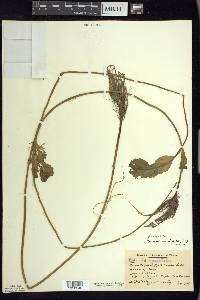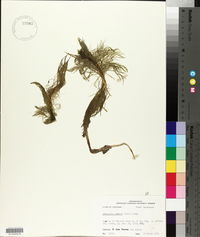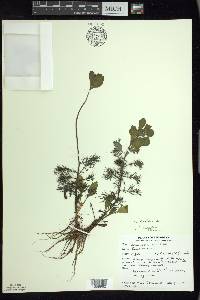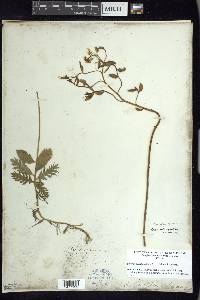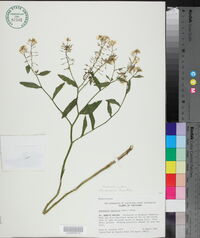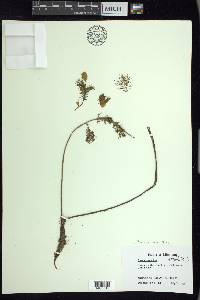Rorippa aquatica
|
|
|
|
Family: Brassicaceae
Lakecress
|
Perennials; (submerged aquatic with emergent flowering branches, rhizomatous, rooting from proximal nodes); glabrous throughout. Stems erect, unbranched or often branched distally, 3-8.5(-11) dm. Basal leaves absent. Cauline leaves: submerged shortly petiolate, emergent sessile or petiolate (to 2 mm); blade: submerged pectinate, finely 1-4-pinnatisect into filiform or capillary segments, emergent lanceolate to oblong, usually undivided, rarely lobed, (1.5-)2-5.5(-6.7) cm × (5-)7-15(-20) mm, margins entire or dentate. Racemes elongated. Fruiting pedicels divaricate to horizontal or slightly reflexed, straight or curved, (5-)7-15 mm. Flowers: sepals (deciduous after anthesis), ascending, oblong, 2-4 × 1.4-1.8 mm; petals white, spatulate to obovate, 4-8 × 2-3.5 mm; median filaments 3-4 mm; anthers linear, 1.7-2.2 mm. Fruits silicles, straight, oblong to ellipsoid, 4-7 × 2.5-3 mm; (septum reduced to a rim); ovules 48-80 per ovary; style 2-4 mm; (stigma slightly 2-lobed). Seeds biseriate, brown to reddish, ovoid, 0.7-0.8 mm (0.5-0.6 mm diam.), reticulate. 2n = 24. Flowering Apr-Aug. Springs, lakes, ditches, streams, open sloughs, swamps; 0-200 m; Ont., Que.; Ala., Ark., D.C., Fla., Ga., Ill., Ind., Iowa, Ky., La., Mass., Mich., Minn., Miss., Mo., N.J., N.Y., Ohio, Okla., Tenn., Tex., Vt., Va., Wis. Submerged leaves of Rorippa aquatica often detach readily and produce adventitious buds from which new plantlets develop. The infrequent production of seeds in this species may indicate that it is self-incompatible and that most or all plants within a given population might be the result of asexual reproduction. It appears to prefer slow, unpolluted, running water. The apparent wide distribution does not reflect how uncommon the species is in any given area. Based on the relatively small number of recent collections in major herbaria, it is likely that most of the county records given by I. A. Al-Shehbaz and V. M. Bates (1987) reflect populations that have disappeared.
Perennial aquatic herb 40 cm - 0.8 m tall Flowers: short-stalked. Sepals ascending. Petals four, white, 6 - 8 mm long, tips rounded. Stamens six. Fruit: a pod, 5 - 8 mm long, oval, inflated. Seeds in one chamber and rarely maturing. Stems: partly submersed in water or on surface. Roots: growing from stems, fibrous. Submersed leaves: pinnately divided into numerous threadlike segments. Emersed leaves: (if any) 3 - 7 cm long, lance-shaped to narrowly oblong, toothed. Similar species: No information at this time. Flowering: mid-June to late July Habitat and ecology: Found in quiet water and on muddy shores. It often prefers shallow calcareous waters. Because of habitat degradation, this species is now more rare than the map suggests. Occurence in the Chicago region: native Etymology: Rorippa possibly comes from the Latin roro, meaning "to be moist," and ripa, meaning riverbank. Aquatica means "growing in or near water." Author: The Morton Arboretum From Flora of Indiana (1940) by Charles C. Deam In stagnant water in ponds and bayous of streams and lakes. Very local but probably found in suitable habitats in many counties. …… Indiana Coefficient of Conservatism: C = 8 Wetland Indicator Status: OBL |

